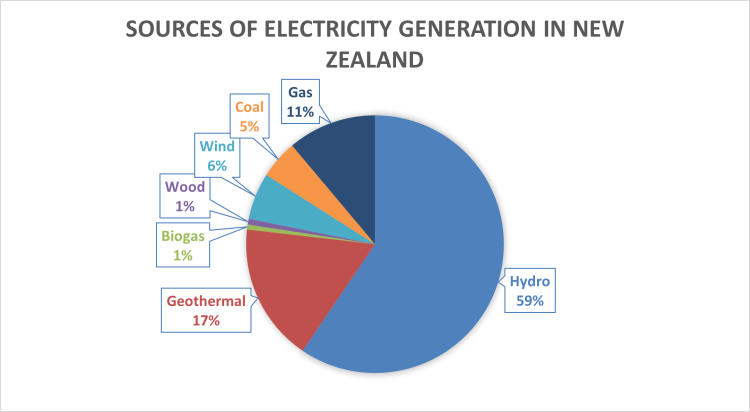Electric buses have substantial energy requirements. Energy supply is imperative to consider in the planning and design of electric bus networks. This section provides a broad overview of characteristics of the electricity supply in New Zealand.
In New Zealand, approximately 84% of energy generation comes from renewable sources (hydro, geothermal, and wind) with the remaining 16% from fossil fuels including gas and coal.
The share of renewable power generation is high by international standards, which provides a comparatively clean source of energy for battery electric buses with more renewable energy projects being planned and consented. The availability of electricity generated from renewable sources provides the opportunity to reduce greenhouse gas emissions from the provision of public transport services.

Sources of electricity generation in New Zealand for December 2020. (Source: MBIE)
Another feature of the electricity market is that demand peaks are bimodal. Demand is highest during the morning (7:30am to 8:30am) and evening (6:00pm to 7:30pm). These are times when households tend to use heating and appliances and higher demand increases electricity prices.
Overnight and during the middle of the day is when there is less demand for electricity, which in turn means that it is cheaper at these times. For bus operators the uneven power demand presents the opportunity to charge some battery electric buses overnight or in the middle of the day to reduce operating costs. This may also be more practicable as the peaks in electricity demand also overlap with peak travel times when most buses will be in service, particularly during the morning peak. However, the interface between the electricity market and bus operational requirements may impact the cost of opportunity (on-route) charging.

Typical electricity demand by time of day. (source: Transpower)
For further guidance to support discussions between electricity sector participants on the provision of electricity infrastructure and power supply for heavy commercial vehicles refer to the Local Electricity Market Guidance. This resource provides further advice on: